
Here’s a sobering fact:
About 20% of new businesses fail in the first year—and older businesses aren’t exempted from failure either. In fact, the chances of failure only get worse with time, with 48% of ecommerce businesses failing at the 5-year mark.
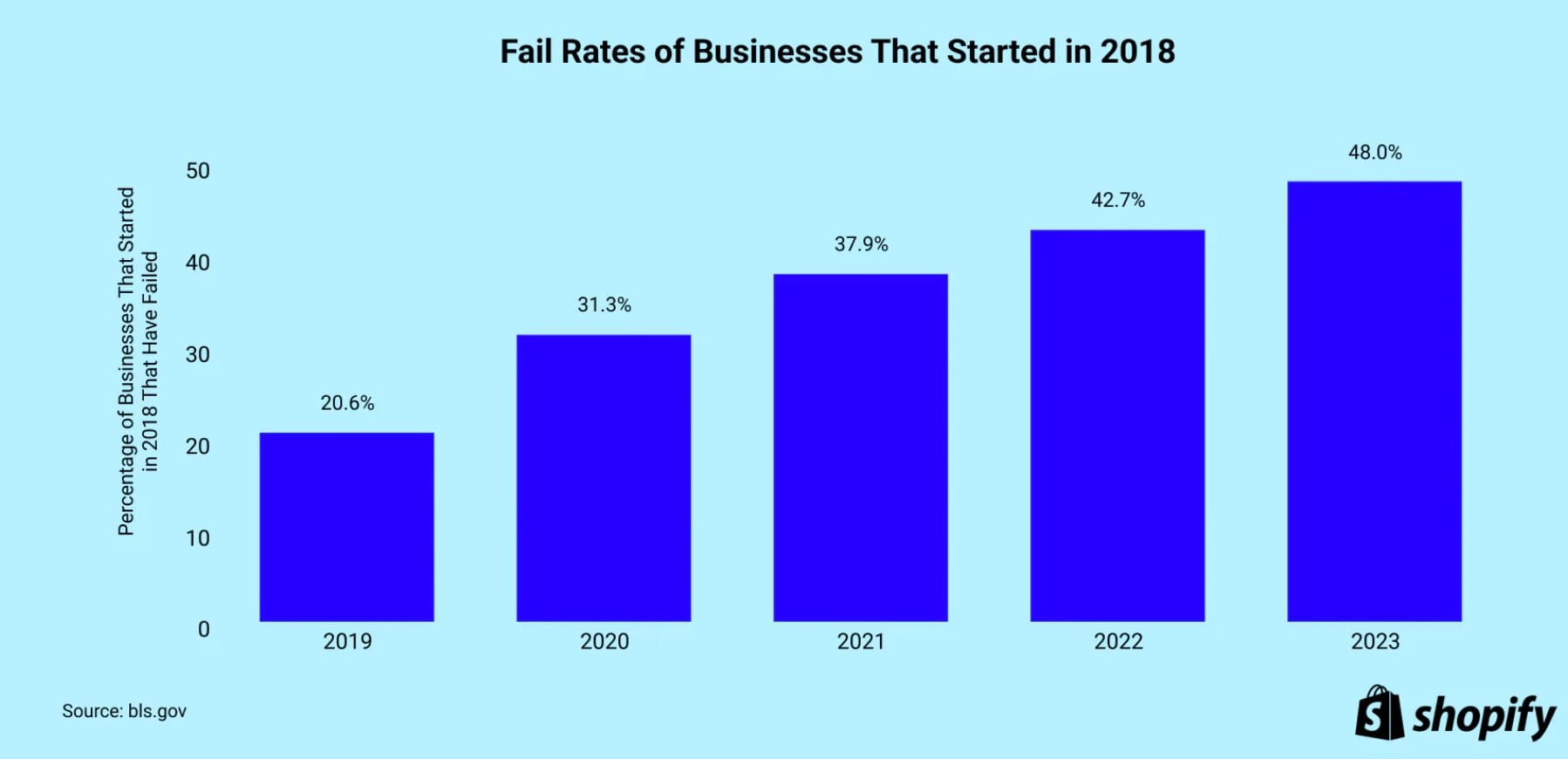
Image source Shopify
Some of the top reasons for this failure include insufficient funding, an inadequate business model, and poor marketing coordination.
That said, if you’re keen on scaling your ecommerce business to the next level or improving your success rate, it wouldn’t hurt to consider adopting an outside-the-box marketing strategy. And this is where growth hacking for ecommerce success comes in.
Growth hacking is a data-driven marketing approach that combines creativity and fast-paced experimentation to supercharge business growth.
In this post, we’ll discuss how you can use growth hacking for ecommerce success. We’ll look at some of the benefits and cover proven growth hacking strategies to help improve your marketing game.
Without taking any more time, let’s get started.
What Is Growth Hacking?
As the name suggests, growth hacking is a growth-focused ecommerce marketing technique that considers the most effective ways to increase conversion and sales using the fewest resources possible.
Unlike traditional marketing that casts a wide net, growth hackers use a more targeted method called the AARRR Framework. This framework focuses on getting maximum output by finding leverage points in five specific areas, namely:
- Acquisition
- Activation
- Retention
- Revenue
- Referral
The term “growth hacking” was first coined in 2010 by Dropbox entrepreneur Sean Ellis and was a popular growth technique among tech startups and SaaS companies. This explains why growth hackers relentlessly seek out lean and creative ways to record business growth by rigorously testing and optimizing ideas.
What works stays, and what doesn’t is immediately discontinued or optimized.
How to Use Growth Hacking for Ecommerce Success
Growth hacking takes a full-funnel approach to finding innovative ecommerce hacks that maximize sales and conversion.
Here’s how to use growth hacking for ecommerce success:
- Acquisition hacking: The first step is attracting traffic to your ecommerce website and product pages. Now, instead of blowing budgets on traditional paid advertising, growth hackers get their hands dirty finding underpriced and underutilized acquisition channels tailored to their target audience. Some great examples include contactless marketing, referral programs, and leveraging viral movements.
- Product hacking: Even a steady stream of traffic isn’t enough to move the needle without surgical conversion rate optimization. Growth hackers obsess over removing points of friction and adding psychological motivators that boost sales.
- Retention hacking: It’s far easier (and cheaper) to keep a customer than to acquire a new one. Research data shows that it could cost 5 to 25 times more to acquire a new customer than to retain an existing one. That said, growth hacking your retention channels is key to maximizing customer lifetime value and forming an army of loyal, recurring buyers.
- Referral hacking: Why pay for new customers when you can get your existing fans to do the marketing for you? According to Dixa, 93% of buyers are more likely to make a purchase after seeing a positive review from other users. Growth hackers use clever referral techniques to turn customers into brand evangelists.
Benefits of Growth Hacking for Ecommerce
There are a slew of benefits that come with using growth hacking for ecommerce success. Some of them include:
- Massive flexibility and pivot allowance: Rather than rolling out marketing campaigns based on hunches, growth hacking takes a disciplined experimentation approach. You can rapidly test a high volume of ideas, double down on what works, and quickly pivot from tactics that fail to gain traction.
- Cost-effective customer acquisition: Growth hacking places a huge emphasis on creativity over cash. As such, this business technique forces you to combine multiple customer acquisition methods to drive traffic instead of boxing yourself into single solutions.
- Compound growth effects: Growth hacking’s full-funnel approach means you aren’t just acquiring new customers; you’re also maximizing revenue per visitor and customer lifetime value. These multiplier effects can unlock exponential revenue growth for your business.
- Increased competitive edge: While competitors rely on conventional marketing tactics, growth hacking for ecommerce success opens you to a consistent stream of innovative, under-the-radar acquisition and conversion strategies to stay steps ahead of the competition.
- Improved customer experiences: Growth hacking revolves around deeply understanding your audience’s pain points and crafting the best possible solutions to meet those needs. This way, you smooth any friction that prevents prospects from converting and deliver seamless funnels that generate much-desired repeat purchases and referrals.
Growth Hacking for Ecommerce Success: Top 13 Strategies
At its core, growth hacking is pretty much A/B testing on steroids. The end goal is to optimize different elements of a buyer’s journey, from the first impression to post-sale.
Here are 13 powerful ways to implement growth hacking for ecommerce success:
1. Use Influencer Marketing
A personal favorite of leveraging growth hacking for ecommerce success is collaborating with influencers.
Influencer marketing isn’t just a growth hack; it’s an absolute essential in today’s market. With nearly 54% of the world’s population using social media for an average of 151 minutes daily, collaborating with influencers is a great way to get your products discovered.
If the Statista chart below is anything to go by, this number is likely going to keep increasing over the coming years.
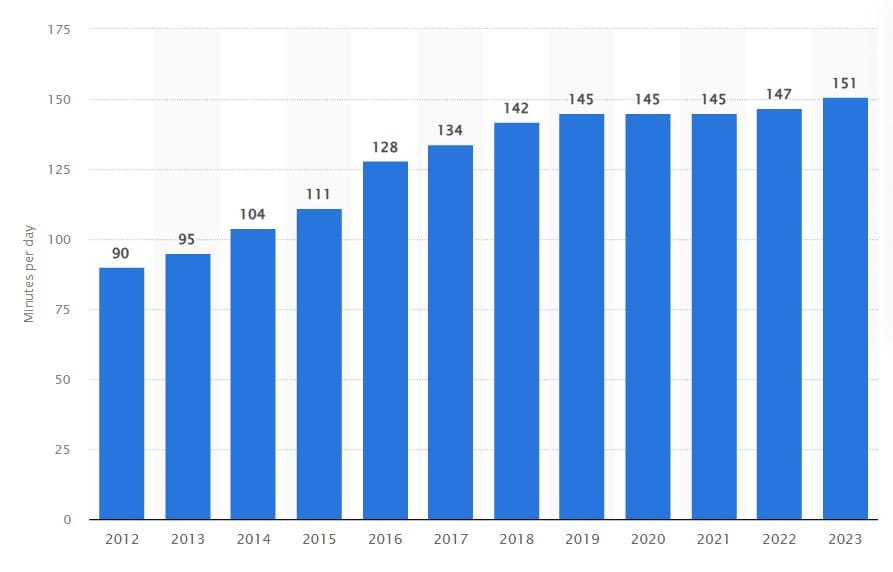
Image source Statista
The growth hack?
Identify micro- and nano-influencers in your niche with a hyper-engaged and loyal following. According to studies, micro- and nano-influencers have the highest levels of engagement on their posts—sponsored or otherwise.
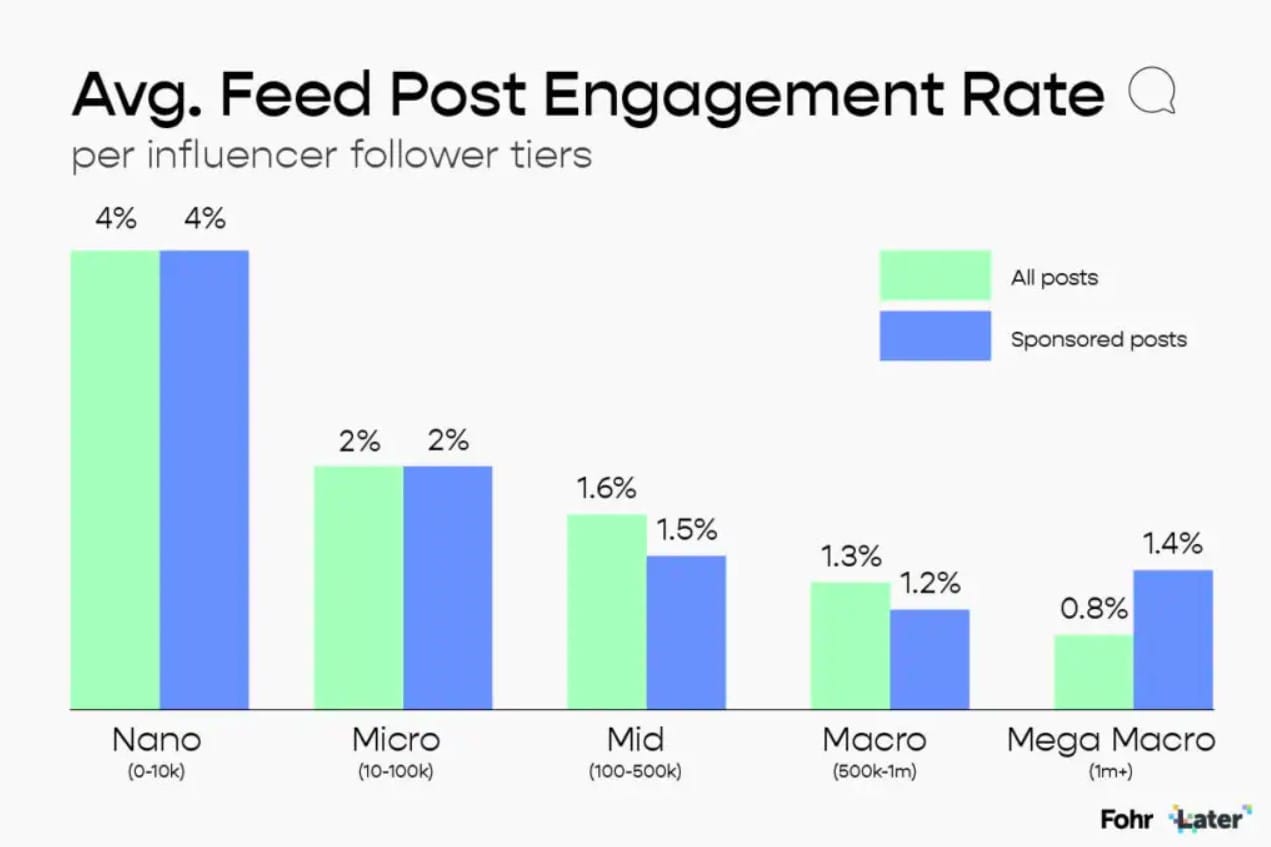
Image source Later
As reviewed and elaborated in in the Attrock guide, the influencer marketing tools help you to make the whole collaboration process seamless. You can choose any one as per your requirements.
However, it’s not enough to simply engage influencers; work closely with them to ensure brand consistency and optimal yield.
2. Spark FOMO
You can capitalize on the innate human psychological fear of missing out (FOMO) by artificially creating a perceived sense of scarcity and exclusivity around your offerings. This triggers urgency and impulse purchases.
To achieve the FOMO effect, consider:
- Flash sales
- “Limited Edition” product drops
- Deep discounts for a short period
- Countdown timers showing dwindling remaining stocks
Take a look at how this Collin Street Bakery email tries to spark FOMO.

Image source Really Good Emails
3. Decrease Website Loading Time
If your website takes forever to load, you’re basically killing your conversion rates before people even have a chance to see your products. According to Portent, the optimal website loading time is between 1 and 4 seconds. Anything slower than that, and your conversions could suffer.
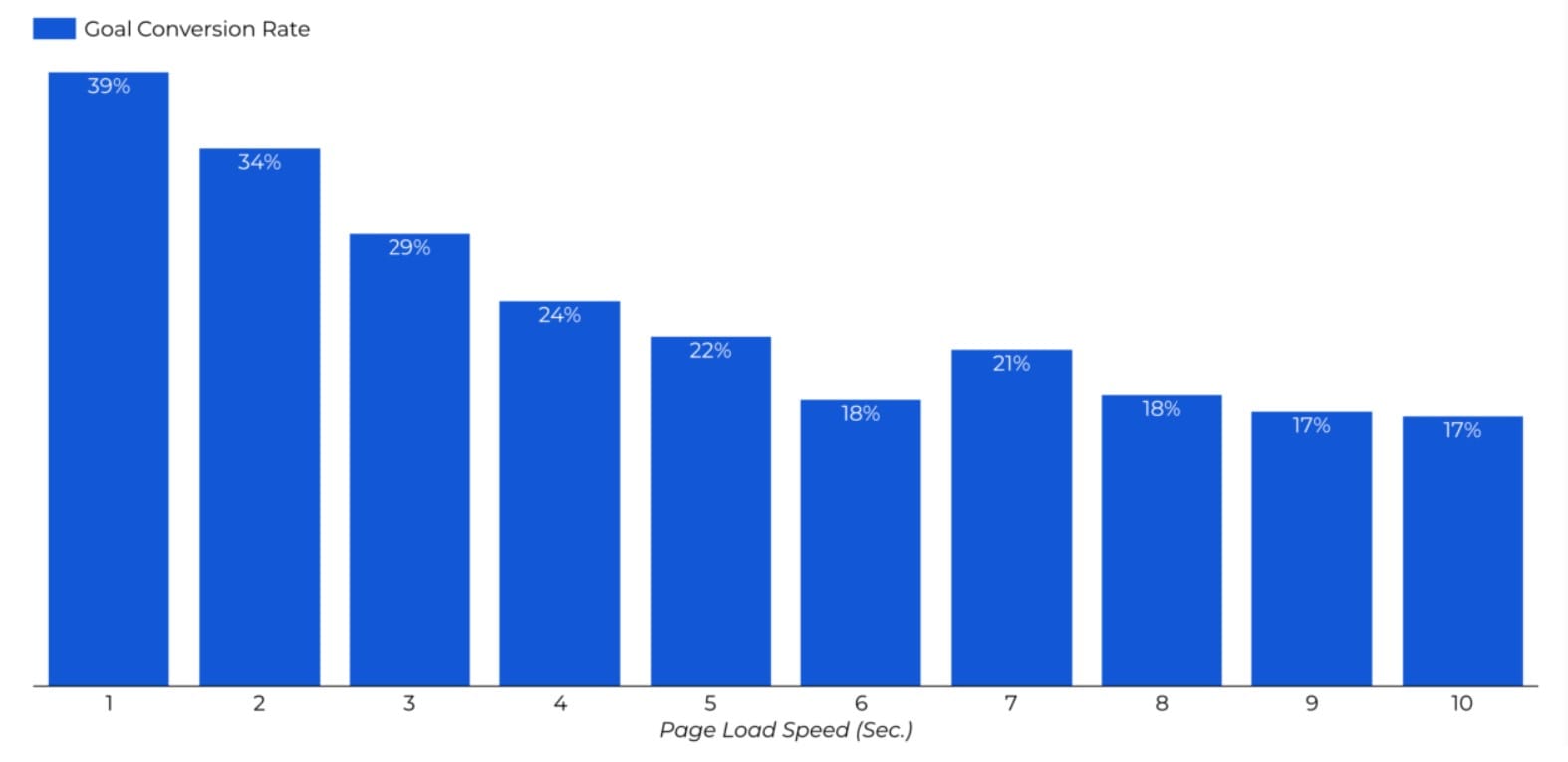
Image source Portent
As such, you’d want to do everything you can to hack your site’s speed to lightning-fast levels.
A few ways you can achieve this involve:
- Leveraging CDNs
- Compressing files
- Optimizing images
- Enabling browser caching
- Adopting lightweight themes or plugins
4. Capture Leaving Visitors with Exit-Intent Pop-Ups
Another great way to use growth hacking for ecommerce success is to not let website visitors slip away empty-handed or without converting.
Use on-exit intent technology to trigger a pop-up message when visitors move to abandon your site. For instance, you can offer a limited-time discount code or free shipping for anyone who opts into your email list.
This Death Wish Coffee popup jumps at you once you try to leave the page.
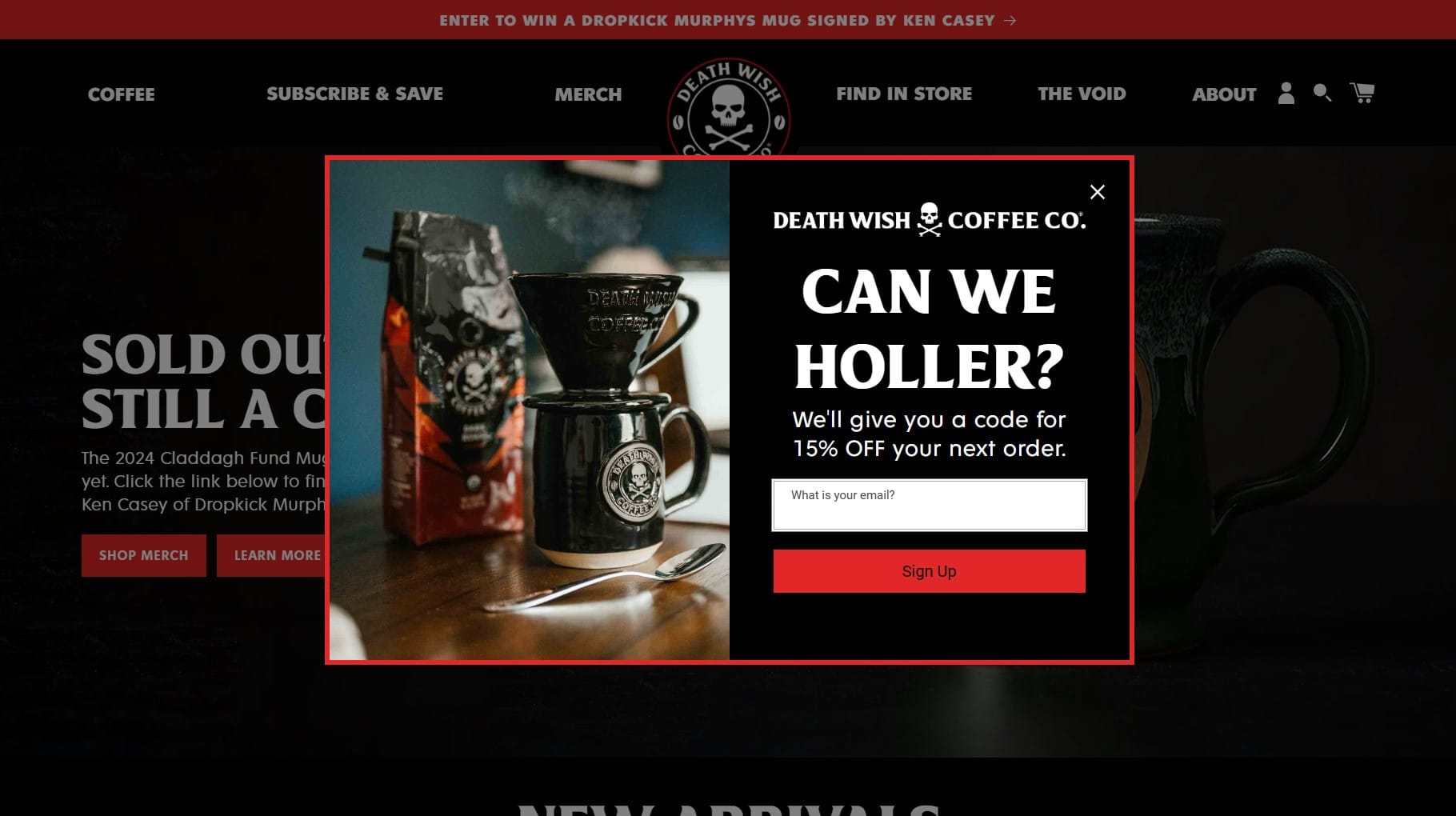
Image source Death Wish Coffee
5. Leverage User-Generated Content
If people don’t trust your marketing messaging, they’ll never turn into buyers. Growth hacking for ecommerce success mandates that you entice potential customers with user-generated content (UGC) instead.
A Dixa study found that 93% of buyers are more likely to purchase a product after coming across a positive review.
That said, growth hackers incentivize customers to promote their products freely across social media. Some ways include running regular photo or video contests, offering rewards for reviews and ratings, and creating branded hashtags.
Once customer testimonials start pouring in, display them everywhere throughout your funnel—from your homepage to product pages. This proves that real people get value from your offerings, which builds powerful social proof that growth hacks your conversion rates.
For instance, Edloe Finch has a section on its website where it displays customer reviews and images of its furniture.

Image source Edloe Finch
6. Radically Simplify the Checkout Process
One of the biggest killers of ecommerce conversion is complicated checkout flows.
Statista data shows that checkout-related issues, such as account creation requests and a long or complicated checkout process, were the main causes of cart abandonment.
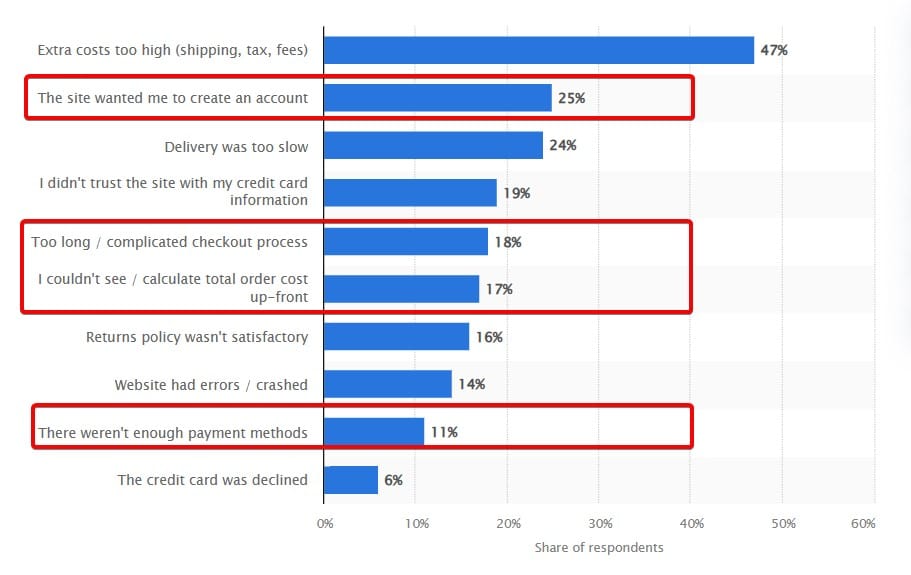
Image source Statista
Simplify your checkout process to ensure that all the effort put into driving traffic and getting shoppers to hit that “Add to Cart” button yields the desired results.
Growth hackers simplify the checkout process by:
- Auto-addressing lookups
- Providing guest checkout
- Using a frictionless hosted payment solution
- Removing all unnecessary form fields
- Using intuitive inline field validations to catch errors early
- Providing an option to save payment information for future purchases
7. Relentlessly Cross-Sell and Upsell
What’s better than making a single sale to a customer? Making multiple sales from that same customer through upsells and cross-sells.
The whole aim is to strike while the iron is hot by promoting complementary product recommendations and higher-tier versions seamlessly throughout the shopping experience.
To leverage growth hacking for ecommerce success, growth hackers layer upsells on the cart page, within the post-purchase thank-you sequence and even on the shipping confirmation emails.
Meanwhile, cross-selling plays show up on the homepage, in product galleries, and anywhere else you can insert enticing merchandising.
8. Offer Generous Referral Programs
My eighth strategy for growth hacking for ecommerce success is referral marketing programs.
Why pay acquisition costs to attract new customers when you can get your existing buyers to do the marketing for you for free or with some incentives?
Set up automated systems where people get rewarded with discounts, cash, or other perks whenever their unique referral link or code results in new paying customers. Apart from that, you’ll want to aggressively promote your referral program for maximum visibility.
For instance, take a look at this Airbnb referral campaign.

Image source Really Good Emails
9. Leverage AI-Powered Solutions
Leverage artificial intelligence and machine learning so you can offer always-on, personalized assistance. For instance, you can use techniques like AI commenting to address common questions, provide product recommendations, initiate purchases, and resolve customer service issues promptly.
Or better yet, take advantage of AI-powered help desk ticketing software including Zendesk, Zoho Desk, and HubSpot Service Hub. These tools help you track and address support requests efficiently, keeping your customers satisfied.
To leverage AI solutions, be sure to choose a platform with robust natural language processing for natural conversational abilities to build rapport with users.
10. A/B Test Everything
One of the easiest ways to use growth hacking for ecommerce success is to regularly conduct A/B testing. From product pages and category navigation to email creative and checkout funnel steps, conduct extensive A/B testing.
A/B testing is more of a science than an art with a simple process pathway. Formulate data-driven hypotheses, run controlled split tests, analyze the results, and then double down on clear winners while abandoning low-impact ideas.
11. Write Guest Posts
Trying to convert cold traffic that knows nothing about your brand is an uphill battle.
The growth hack for ecommerce success?
Expand your content reach and brand awareness through guest posting on reputable industry publications and blogs within your niche. When people see your brand name pop up alongside trusted experts, it builds authority and credibility.
To secure guest posting slots with reputable publications, craft value-adding guest posts that teach readers about topics related to whatever you sell. While you’re at it, naturally weave in examples of your products as the ideal solution and use clear CTAs within each post to stimulate new leads.
12. Send Automated “Buy It Again” Emails
As we’ve seen, growth hacking for ecommerce success proposes that you maximize customer lifetime value and form an army of loyal and recurring buyers.
Once you acquire a paying customer, a smart growth hack is to put them on an automated reorder sequence to hack their lifetime value. This is especially potent if your business deals with replenishable or consumable goods.
It’s easy. Segment buyers into behavior groups, such as weekly, monthly, or quarterly purchasers. Then, trigger “Buy It Again” reminder emails or SMS alerts at their typical reorder frequency.
Meanwhile, be sure to include 1-click reorder links or insert personalized cross-sell/upsell offers based on their previous purchases.
Take a look at this simple reorder email from Nuggs.

Image source Really Good Emails
13. Personalize With Real-Time Product Recommendations
My final point on using growth hacking for ecommerce success is to give your shoppers a personalized experience, especially in your recommendations.
Generically recommending products to everyone who visits your store rarely grabs attention and could cost you sales and conversions. To optimize growth hacking for ecommerce success, personalize your marketing efforts by leveraging real-time customer data and behavior signals.
Instead of using blanket recommendations, serve up different product recommendation quizzes, persuasive upsell flows, hyper-relevant “Picked for You” recommendations, and homepages based on their onsite behavior and demographics.
Aggressively contextualize offers to each customer’s tastes and preferences and watch conversions soar.
Pitfalls to Avoid When Growth Hacking for Ecommerce Success
While growth hacking can turbocharge your ecommerce growth, it’s easy to get tripped up by common pitfalls. That said, to optimize growth hacking for ecommerce success, avoid these mistakes:
- Buying into growth hacking myths: Growth hacking is not a get-rich-quick scheme. Real growth hacking for ecommerce success requires persistent innovation, commitment, and time; don’t get trapped in the idea of overnight success.
- Getting complacent after a few wins: Growth hacking for ecommerce success requires a mindset of continuous learning and perseverance. Bagging a few wins right out of the gate isn’t a license to kick up your feet and call it a day. Customer behavior and market dynamics are constantly evolving; regular iteration and optimization are critical to staying ahead of the curve.
- Lacking proper tracking and analytics: At its core, growth hacking is an iterative process of testing business hypotheses using data and analytics. As such, you must button down your tracking and measurement game; otherwise, you’ll likely end up chasing vanity metrics and coming up short.
- Sacrificing the customer experience: In the pursuit of rapid testing and conversion rate optimization, don’t lose sight of delivering amazing end-to-end customer experiences. Always prioritize providing a fast, seamless shopping experience first. Don’t fall into the trap of sending excessive pop ups, pushing upsells too much, and using sneaky tactics that could erode trust and push your customers away.
- Spreading yourself too thin: With a barrage of potential growth hacks to experiment with, it’s very easy to overstretch your naturally limited time and resources across too many initiatives. Meticulously measure every campaign’s performance and double down on just your biggest winners.
- Ignoring acquisition costs: Efficient and scalable growth depends on sustainable customer acquisition costs. Monitor the expenses required for each new sale or lead generated. A simple growth hacking rule of thumb is: if you’re spending more to convert a customer than their lifetime value, you’ve defeated the purpose.
- Forgoing long-term strategy: While short-term hacking can inject bursts of growth into your ecommerce business, don’t forget to balance that with building long-term brand equity, authority, and customer loyalty.
Wrapping Up
To get ahead in today’s crowded ecommerce landscape, consider using growth hacking for ecommerce success.
Relentlessly test data-backed acquisition channels coupled with conversion rate optimization and retention hacking throughout your entire funnel.
Doing this can help you increase your chances of tapping into a consistent pipeline of wins that result in exponential revenue growth.
From leveraging influencer marketing and sparking FOMO to deploying AI-powered solutions, the possibilities of growth hacking for ecommerce success are virtually limitless.
Continuously iterate and double down on your biggest winners, and let data objectively steer your path to ecommerce success.
Do you have other growth-hacking strategies that you use? Let me know in the comments.





